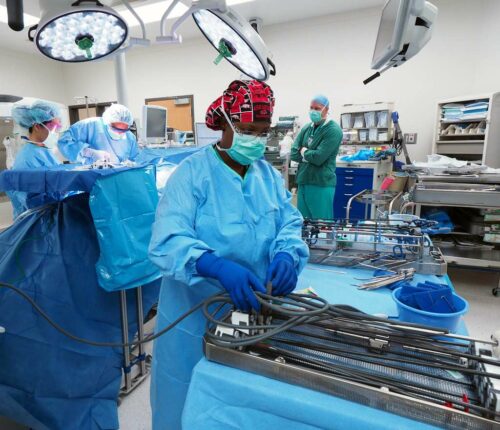Image Courtesy of Picryl.
If you are a patient soon undergoing open-heart mitral valve surgery—surgery to correct one of four major valves in the heart—the procedure may seem daunting. Fancy words such as ‘mitral valve’ and ‘regurgitation’ might confuse and worry you. But your doctors, sensing your fear, will assure you that their team is highly skilled and reputable; in fact, they might even have a robot on their side.
Robots’ highly magnified cameras and virtual control have historically been shown to decrease the length of a patient’s hospital stay and recovery time. In a recent study published in The Annals of Thoracic Surgery, Yale cardiothoracic surgery resident Makoto Mori and colleagues sought to verify the benefits of robotic assistants in surgery by examining over sixty thousand patients during a seven-year period. They observed that the use of robotic repair techniques for open-heart mitral valve surgery increased by approximately four percent. The research team found no significant difference in mortality and morbidity rates when comparing robotic and traditional repair methods, which suggested that robotic repair may be a safe alternative. Moreover, evidence showed a correlation between patients undergoing robotic repair and shorter hospital stays as well as lower rates of readmission within thirty days post-surgery.
Despite the potential benefits, hospitals in the US have been slow to adopt robotic repair. This can be attributed to the high cost and steep learning curve that come with this technology; robots usually lack the tactile response surgeons expect, necessitating extensive troubleshooting. “Dynamic interaction between surgeons wanting to start a new team and surgeons who have already established [one] might provide part of the answer,” Mori said. The future of robot-assisted heart surgery may one day be realized through further technical analysis, research, and education, unlocking the potential found in a robot’s helping hand.

